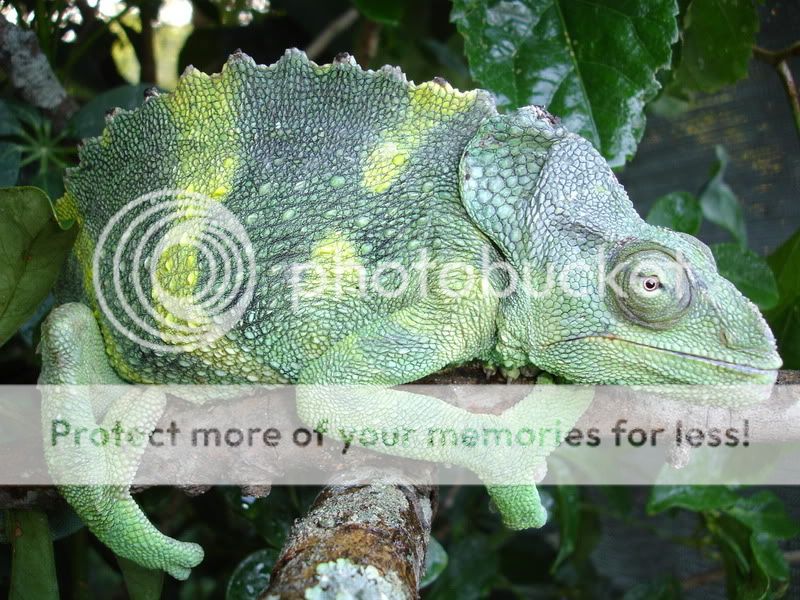studiocham
New Member
Seeking ideas to help my herp vet diagnose this odd and sudden issue. A few days ago, one of my CB 2yo melleri started having seizures at various times of the day. Then his brothers started, one of which seems to be OK now. I had bloodwork done to see if it was Nutritional Secondary Hyperparathyroidism. The Ca h came back 3:1, liver values, uric acid, etc. all good. The only things slightly high were protein and Potassium (used bananas in gutload this week). I have 10.0 ReptiSuns, ZooMed Reptibulb hotspots, also daylight compact fluourescents for variety of visible spectrum... reptariums, aluminum screen for one, all non-toxic live plants (schefflera, pineapple, lemon). Right before the whole thing started, they dropped male breeding color and went to normal aqua green resting color (which they retain during seizures, too). Oral mucosa look good, not pale. Seizures start with lights coming on or turning off, or touch, or the misters coming on, or spontaneous. Seizures can include most extreme lateral compression I've ever seen in chams. Anorexia in two, one of those two is still drinking on his own. Two worst affected are often found on cage bottom because the seizures make them fall. The better third had some potting soil on him indicating he'd fallen once.
h came back 3:1, liver values, uric acid, etc. all good. The only things slightly high were protein and Potassium (used bananas in gutload this week). I have 10.0 ReptiSuns, ZooMed Reptibulb hotspots, also daylight compact fluourescents for variety of visible spectrum... reptariums, aluminum screen for one, all non-toxic live plants (schefflera, pineapple, lemon). Right before the whole thing started, they dropped male breeding color and went to normal aqua green resting color (which they retain during seizures, too). Oral mucosa look good, not pale. Seizures start with lights coming on or turning off, or touch, or the misters coming on, or spontaneous. Seizures can include most extreme lateral compression I've ever seen in chams. Anorexia in two, one of those two is still drinking on his own. Two worst affected are often found on cage bottom because the seizures make them fall. The better third had some potting soil on him indicating he'd fallen once.
No owners of sibling CBs have reported this.
I'm waiting for blood smear results to tell if filarials are causing it, and white blood cell count. Have yet to test water (mist system).
What else could cause seizures- or if not true seizures, what could cause loss of muscle control and make a cham loop to the side or vertically for about 15-30 seconds at a time, eyes locked in cross, turrets immobile? It makes me think of encephalitis, the looping... what can cause it in a cham?
This is time-sensitive, I don't want to have to put anyone down unnecessarily. Thank you in advance for your brainstorming, or if you've seen it before, your account of the condition's progress or cure.
No owners of sibling CBs have reported this.
I'm waiting for blood smear results to tell if filarials are causing it, and white blood cell count. Have yet to test water (mist system).
What else could cause seizures- or if not true seizures, what could cause loss of muscle control and make a cham loop to the side or vertically for about 15-30 seconds at a time, eyes locked in cross, turrets immobile? It makes me think of encephalitis, the looping... what can cause it in a cham?
This is time-sensitive, I don't want to have to put anyone down unnecessarily. Thank you in advance for your brainstorming, or if you've seen it before, your account of the condition's progress or cure.




